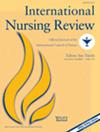Impacts of Second-Victim Experience and Resilience on Nurses’ Turnover Intention
Abstract
Aim
This study aimed to examine the relationships between second-victim experience, resilience, and nurses’ turnover intention.
Introduction
The second-victim experience significantly affects nurses’ psychological well-being in healthcare settings, leading to serious consequences. These psychological impacts can compromise patient care, clinical judgment, and confidence, ultimately jeopardizing patient safety and the quality of care. Support from organizations and colleagues is vital to alleviate the negative effects of these experiences. Addressing these factors can help develop targeted interventions to prevent adverse outcomes from second-victim experiences.
Methods
This cross-sectional correlational descriptive study collected data from secondary- and tertiary-care hospitals across 13 regions of Saudi Arabia, with 117 nurses participating. The Second-Victim Experience and Support Tool, Turnover Intention Scale, and Connor–Davidson Resilience Scale 25 were utilized to assess secondary-victim experiences, resilience, and turnover intention.
Results
Local nurses reported higher second-victim experiences (M = 2.83, SD ± .42, p = .004) and turnover intention (M = 2.83, SD ± .42, p = .012) but lower resilience scores (M = 12.43, SD ± 4.6, p = .03) compared with expatriate nurses. A significant positive correlation existed between second-victim–related distress and turnover intention. Conversely, a significant negative correlation existed between most second-victim–related variables (physical and psychological distress), supervisor support, and resilience. The regression model was significant (F [1, 115] = 73.13, p < .001, R2 = .389), with second-victim experience (β = 1.822, p < .001) significantly predicting turnover intention.
Discussion
This study highlights the physical and psychological distress experienced by nurses, their turnover intentions, and resilience in response to second-victim experiences.
Implications for Nursing Practice and Policy
Health organizations should implement programs that assist nurses with overcoming trauma post adverse events and enhancing resilience, which may reduce their turnover intention in the profession.

 求助内容:
求助内容: 应助结果提醒方式:
应助结果提醒方式:


